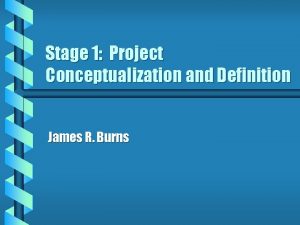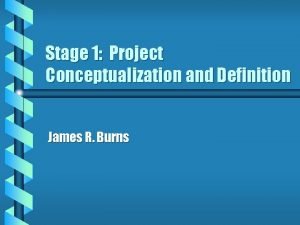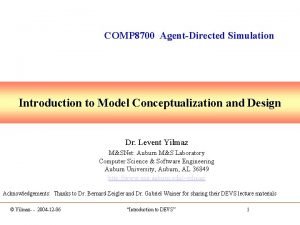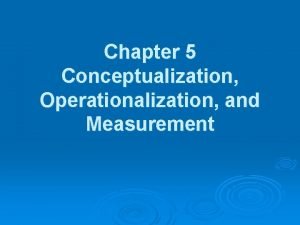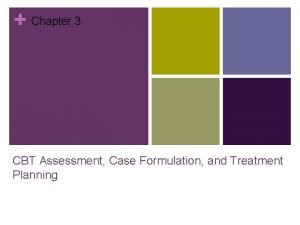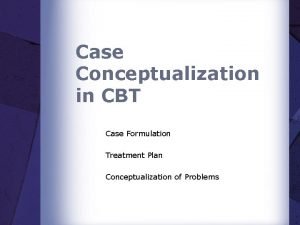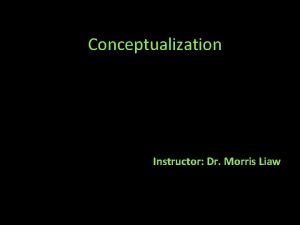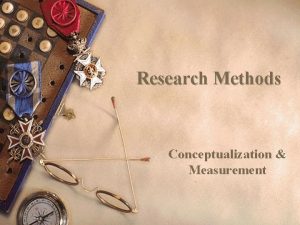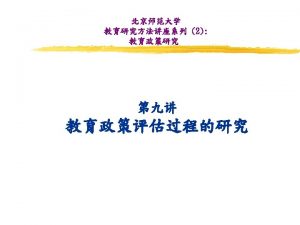Test Development Test conceptualization Test construction Test tryout









- Slides: 9

Test Development • • • Test conceptualization Test construction Test tryout Item analysis Test revision

Test construction • Scaling: process of setting rules for assigning numbers in measurement; how numbers are assigned to different amounts of the construct being measured • Scaling methods based on objectives of test

Scaling Methods • Rating scales: less to more continuum – Summative scale: ratings on each item are summed for total • Likert scale: 5 or 7 response alternatives, usually agree/disagree continuum • Guttman scale: weaker to stronger expressions; all respondents who agree with stronger statements also agree with milder statements • Ordinal measurement

Test Tryout • What is a good item? • Item Analysis – Item-difficulty index: proportion of total testtakers who get item right (p=0 to 1) – Higher the p, easier the item

Good items (cont. ) • ITEM-VALIDITY INDEX: degree to which a test measures what it intends to • Function of the item-score standard deviation & correlation between item and criterion • Item-validity index=

Good items (cont. ) • ITEM-RELIABILITY INDEX: indication of the internal consistency of the test • Product of the item-score standard deviation and the r between the item score and total test score

Good items (cont. ) • ITEM-DISCRIMINATION INDEX: Does the item differentiate (discriminate) between high scorers and low scorers? • Difference between the proportion of high scorers answering an item correctly and the proportion of low scores answering the item correctly • The higher the d value the greater # of high scorers answering correctly; - d value is a red flag – Range from -1 to +1 – Highest & lowest 27%

Good items (cont. ) • ANALYSIS OF ITEM ALTERNATIVES: How many test takers chose each alternative on multiple-choice test? – Are there patterns? – Any one distractor that attracts answers? – How do high scorers and low scorers compare?

Guessing • Correction formula: – Assumes all alternatives are equally plausible and that items can be divided into those an examiner knows perfectly and those he/she doesn’t know. – Ex. Estimated # correct = Right - Wrong/k-1 • (k = 3 of alternatives) • ex. 50 -15/3=45
 Cheer judges score sheet
Cheer judges score sheet Project conceptualization
Project conceptualization Conceptualization of project
Conceptualization of project Model conceptualization in simulation
Model conceptualization in simulation Conceptualization, operationalization, and measurement
Conceptualization, operationalization, and measurement What are the methods ways to use to identify customer needs
What are the methods ways to use to identify customer needs Cbt formulation template
Cbt formulation template Intensions
Intensions Housing continuum
Housing continuum Cbt case conceptualization and treatment planning example
Cbt case conceptualization and treatment planning example

